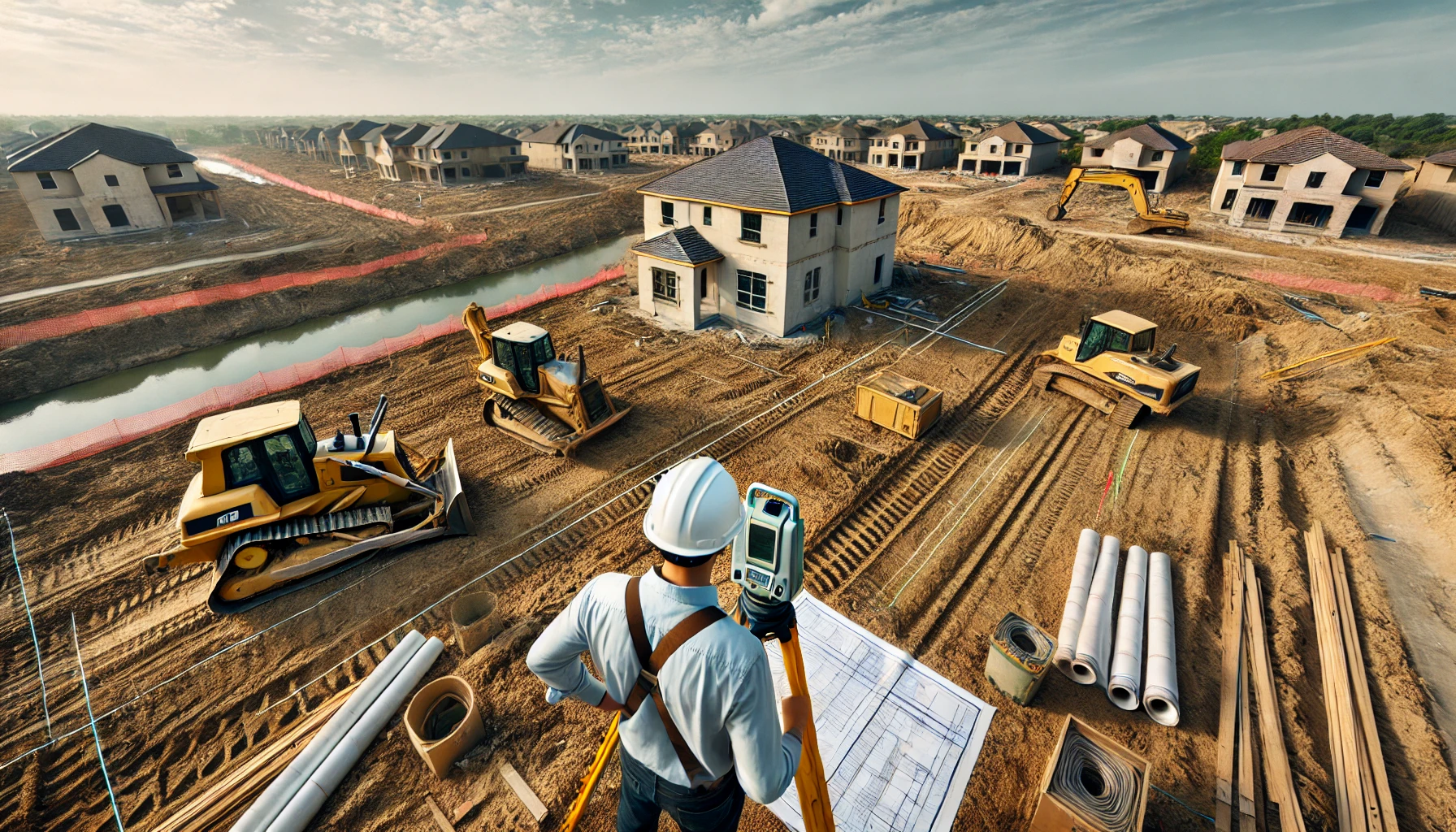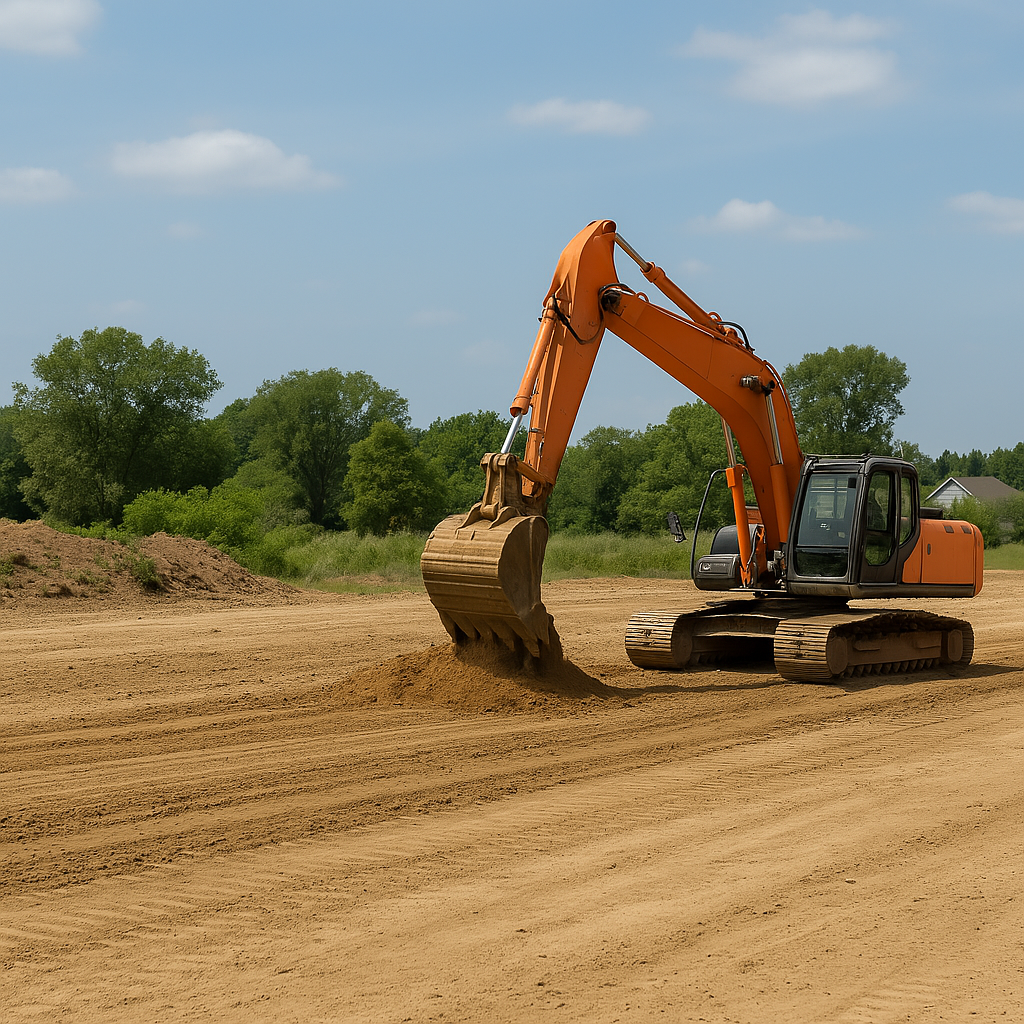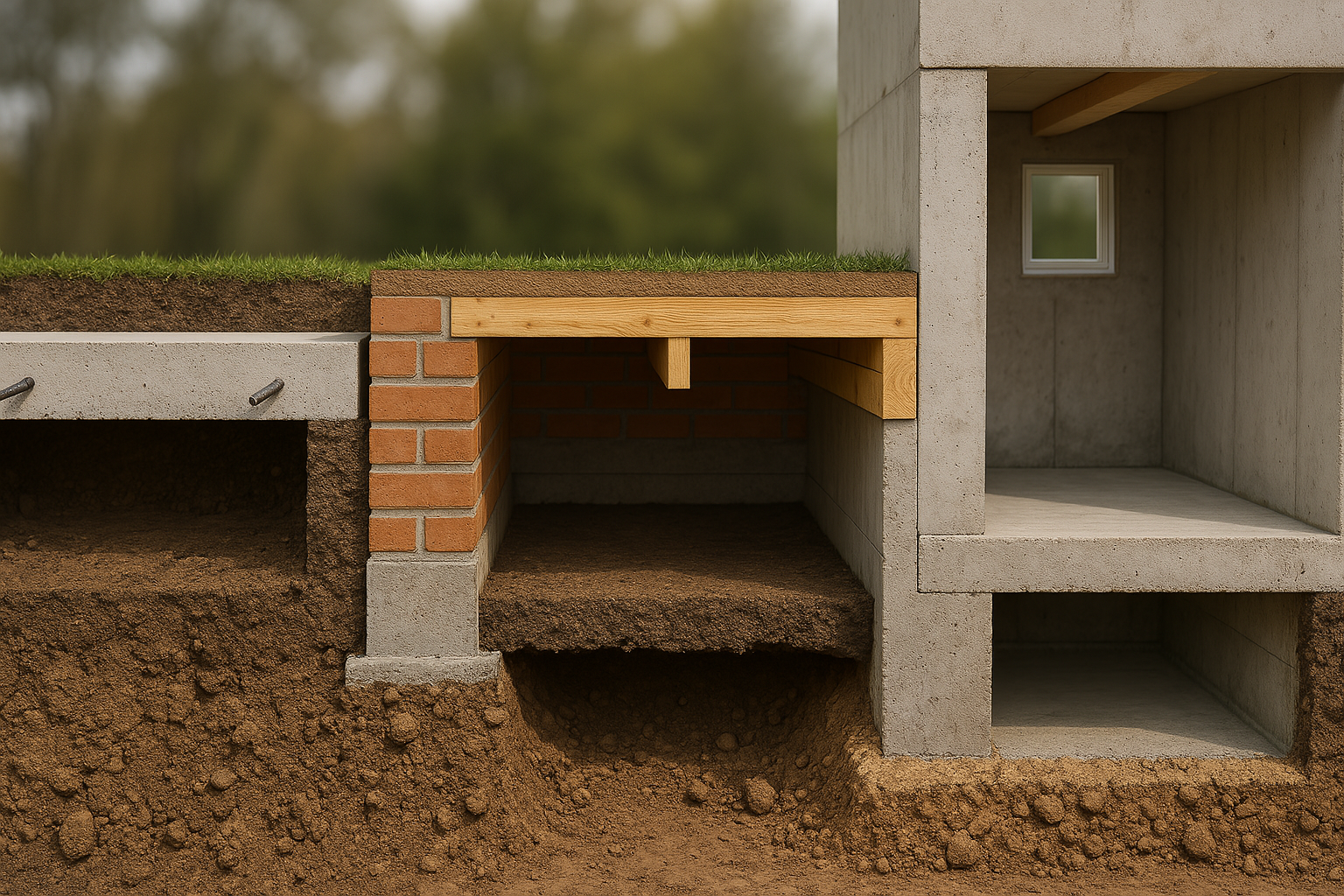
Check out our app!
Explore more features on mobile.
Construction Site Preparation: The Complete Step-by-Step Guide for Real Estate Investors
Proper site preparation is the foundation of every successful construction project—skip it or cut corners, and you risk costly delays, structural problems, and safety hazards. Our in-depth analysis reveals that inadequate site prep contributes to 35% of construction delays and nearly 28% of budget overruns. This comprehensive guide walks you through essential site preparation steps, cost breakdowns, and expert strategies to ensure your real estate investment starts on solid ground.

[Image: Professional Site Preparation with Heavy Equipment]
Key Steps in Site Preparation
These are the essential steps you need to take when preparing your site for construction, with expert insights to maximize your investment protection:
1. Survey and Staking
Conduct a comprehensive site survey to accurately mark property boundaries and stake out the construction area. This critical step ensures that your construction remains within legal property limits and meets zoning requirements.
- Advanced techniques: Modern GPS surveying provides accuracy within centimeters
- Documentation: Obtain certified survey documents for permit applications and future reference
- Boundary verification: Confirm survey markers against legal property descriptions to prevent disputes
2. Clearing and Demolition
Remove trees, vegetation, and existing structures from the construction area while implementing environmental protection measures. Proper clearing creates a safe, accessible worksite while preserving valuable landscape features when possible.
- Selective clearing: Identify and preserve valuable trees that won’t interfere with construction
- Hazardous materials: Test for and properly remove asbestos, lead, or other dangerous substances
- Recycling opportunities: Sort demolition materials for potential reuse or recycling to reduce costs
3. Grading and Excavation
Level the ground and prepare it for the foundation according to engineering specifications. Proper grading is essential for structural integrity and preventing future drainage problems that could damage your investment.
- Soil analysis: Test soil composition to identify potential issues like expansive clay or inadequate load-bearing capacity
- Drainage planning: Create proper slopes (min. 6″ drop over 10′ distance) to direct water away from foundations
- Compaction testing: Verify soil density meets engineering requirements to prevent future settlement
4. Utility Setup
Coordinate the installation of temporary utilities essential for the construction process, including water, electricity, and waste management systems. Proper planning prevents costly delays and ensures worker productivity.
- Utility mapping: Locate and mark existing underground utilities to prevent dangerous strikes
- Temporary service planning: Position utilities for optimal construction access while planning permanent locations
- Permit coordination: Schedule utility inspections to align with construction milestones
5. Erosion and Sediment Control
Implement proven methods like silt fences, erosion control blankets, and detention basins to prevent soil erosion and sediment displacement. These measures protect your site, neighboring properties, and local waterways while ensuring compliance with environmental regulations.
- Perimeter protection: Install silt fencing before clearing begins to capture runoff sediment
- Stabilization techniques: Use hydroseeding or erosion control mats on vulnerable slopes
- Maintenance schedule: Regularly inspect and repair erosion controls, especially after rainfall
6. Final Inspection
Conduct a thorough inspection to verify all site preparation meets local regulatory standards and project specifications before proceeding to foundation work. This critical step prevents costly corrections later in the construction process.
- Documentation: Compile all permits, surveys, soil tests, and inspection reports
- Verification checklist: Confirm all preparation meets both code requirements and construction plans
- Photographic record: Create detailed visual documentation of completed site preparation
Who Handles Site Preparation?
Site preparation requires various specialized professionals working as a coordinated team:
- Licensed Land Surveyor: Provides accurate boundary determination and construction staking with legal certification
- Land Clearing Specialist: Safely removes vegetation and demolishes existing structures while minimizing environmental impact
- Excavation Contractor: Executes precision grading, excavation, and soil compaction according to engineering specifications
- Erosion Control Specialist: Designs and implements systems to prevent soil loss and protect water quality
- Utility Contractors: Coordinate and install temporary services essential for construction operations
- Geotechnical Engineer: Evaluates soil conditions and recommends appropriate foundation solutions
Time & Cost Estimates
The time and cost to complete site preparation vary based on property size, land condition, local regulations, and project complexity. Here are more specific estimates for each major step:
| Preparation Stage | Estimated Time | Estimated Cost | Key Value Points |
|---|---|---|---|
| Survey and Staking | 2–3 days | $500–$1,800 | Prevents boundary disputes and construction errors |
| Clearing and Demolition | 3–7 days | $1,500–$6,000 | Creates a safe, accessible construction environment |
| Grading and Excavation | 2–5 days | $2,000–$8,500 | Establishes proper drainage and stable foundation base |
| Utility Setup | 1–3 days | $500–$2,500 | Ensures essential services for construction operations |
| Erosion and Sediment Control | 1–2 days | $1,000–$3,500 | Prevents environmental damage and compliance violations |
| Final Inspection | 1–2 days | $300–$800 | Verifies compliance with regulations and specifications |
| Total Estimates | 10–22 days | $5,800–$23,100 | Investment protection and regulatory compliance |
These cost estimations provide a general guideline and cover a range from basic to mid-tier builds. They may not reflect costs for high-end or luxury projects. For more precise estimates, consult with professionals based on your specific requirements.
Cost-Saving Tips
Optimize your site preparation investment with these expert strategies:
- Timing optimization: Schedule land clearing and grading during dry weather to avoid weather-related delays and additional costs
- Equipment consolidation: Coordinate with contractors to minimize the number of equipment mobilizations to reduce fees
- Material recycling: Process cleared vegetation into mulch and reuse excavated soil for backfilling to reduce disposal costs
- Regulatory incentives: Research local programs that offer discounts or financial incentives for erosion control compliance
- Contractor expertise: Hire experienced professionals familiar with local regulations to avoid costly rework or compliance penalties
- Bulk purchasing: Negotiate package pricing for erosion control materials and temporary utilities through primary contractors
Summary: Your Site Preparation Action Plan
1. Understand Your Site Preparation Tasks
Know the essential steps and benefits of proper site preparation to protect your investment and ensure construction success.
2. Complete Survey Details
Gather all necessary information on your site, including professional survey documentation and soil testing results.
3. Follow Action Items
Verify boundary markers, confirm zoning compliance, and implement proper drainage solutions to ensure a smooth construction process.
A professionally prepared site is the foundation of every successful construction project. Follow these expert-backed steps to build with confidence.
Start Your Site Preparation With Confidence
Track Your Progress: Monitor your site prep milestones with our interactive tools
Stay Notified: Receive alerts for deadlines, inspections, and essential steps
Step-by-Step Guidance: Follow detailed instructions on boundary verification, zoning compliance, and more
Reduce Stress: Keep all site preparation details organized in one secure location
Whether you’re building from scratch or preparing a site for renovation, this guide provides everything you need to manage your project with confidence. Explore our Step-by-Step Builds, Step-by-Step Buys, and Step-by-Step Invest resources for more expert guidance.
When building your own home, always do your due diligence. Consult the professionals you’ve hired—such as your architect, subcontractors, or engineers—and confirm that your work complies with all local building codes and inspections required in your country, state, or province. Builds and Buys is for educational purposes only. Always verify with licensed professionals.
Site Preparation Construction Class
Join Shemss Homes in Lake Tahoe for exciting hands-on construction classes! Our first class, “Site Preparation,” recently took place in South Lake Tahoe. Whether you’re a seasoned contractor or simply eager to learn, our free classes are open to all.
Check out more informative Videos
News And Knowledge
Stay informed with the latest trends, insights, and updates in the real estate world.
Your Tools
Access your tools to manage tasks, update your profile, and track your progress.
Collaboration Feed
Engage with others, share ideas, and find inspiration in the Collaboration Feed.









